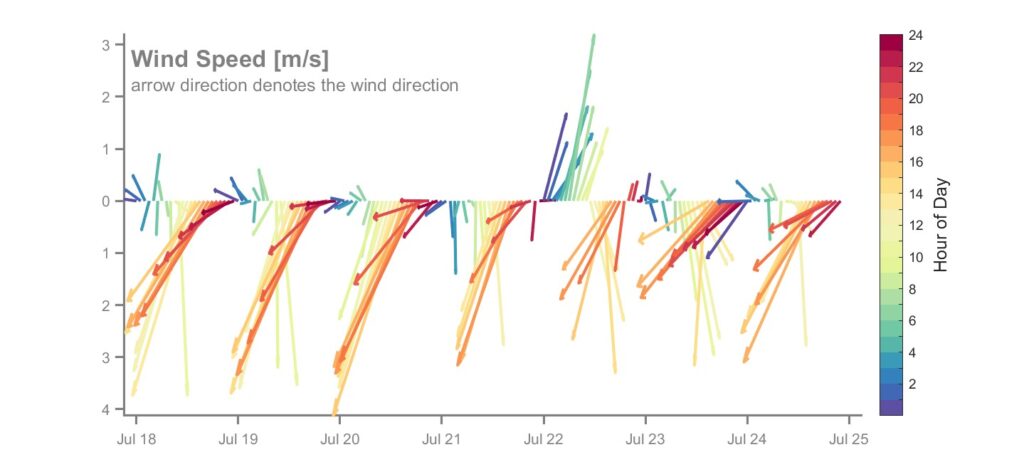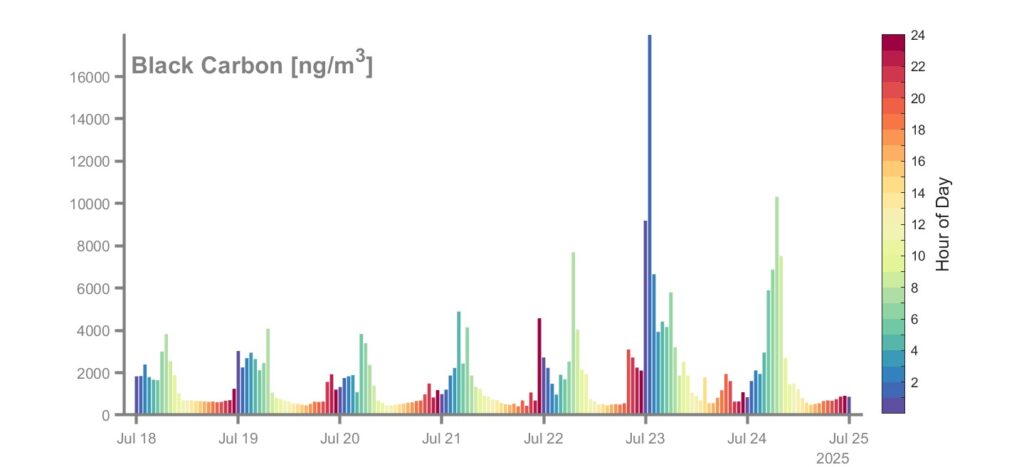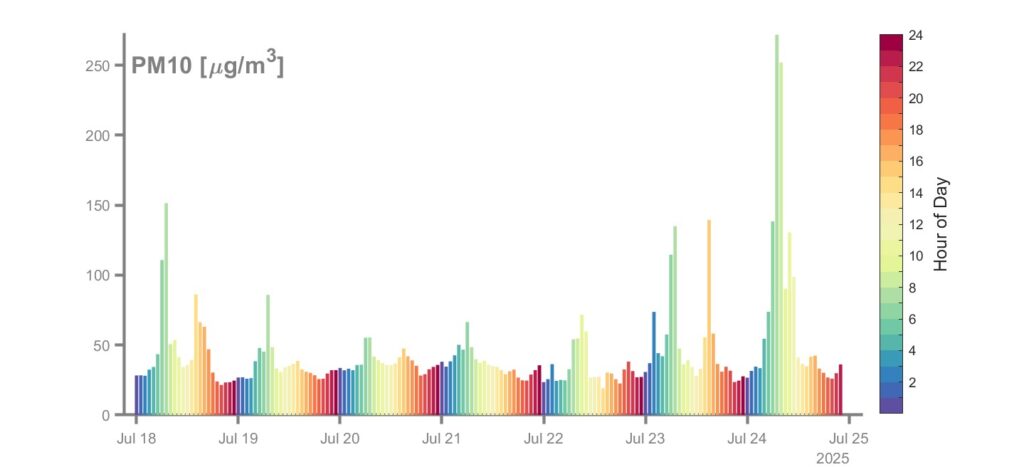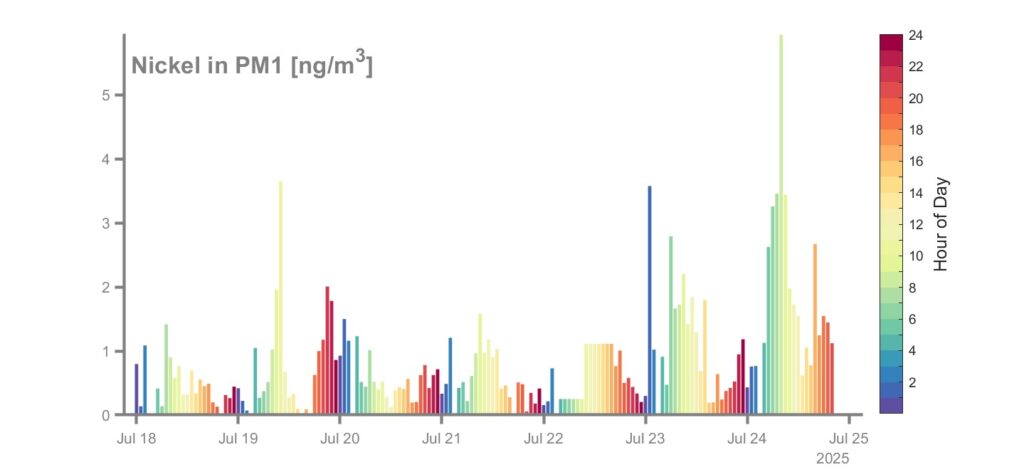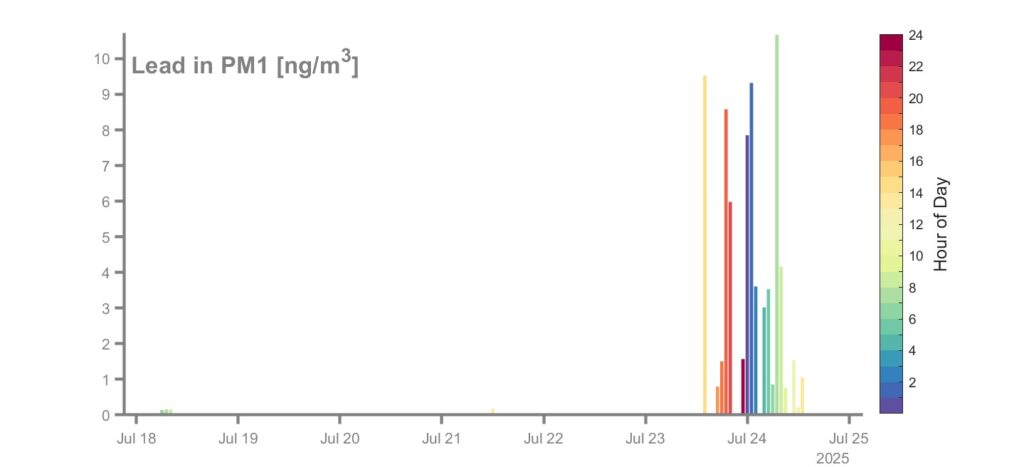🔥 Air Quality Alert: Limassol Wildfires Trigger Pollution Spikes at CAO-LIM Monitoring Station
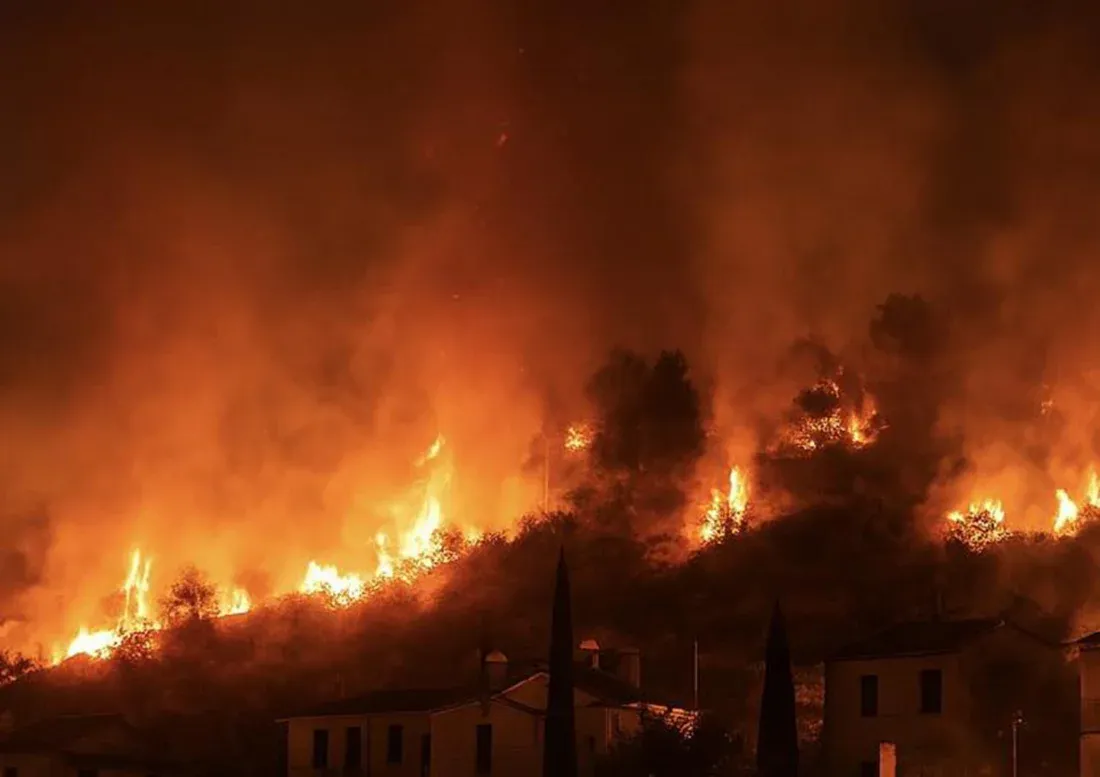
Over the past two days, massive fires—fueled by high temperatures, strong shifting winds, and arid condition—have swept across the foothills of the Troodos Mountains. .
The dangers of these fires extend far beyond where the fire flames. As thick smoke is released into the atmosphere, it carries with it a hazardous cocktail of pollutants that can travel kilometers from the fire front, affecting the air quality across a much wider region.
Wildfire smoke is a serious health risk and at CAO we are particularly concerned about fine particulate matter (PM) pollution associated with forest fires. These tiny particles can penetrate deep into the lungs and even enter the bloodstream causing serious health effects.
Winds Bring Smoke to COA_LIM Station
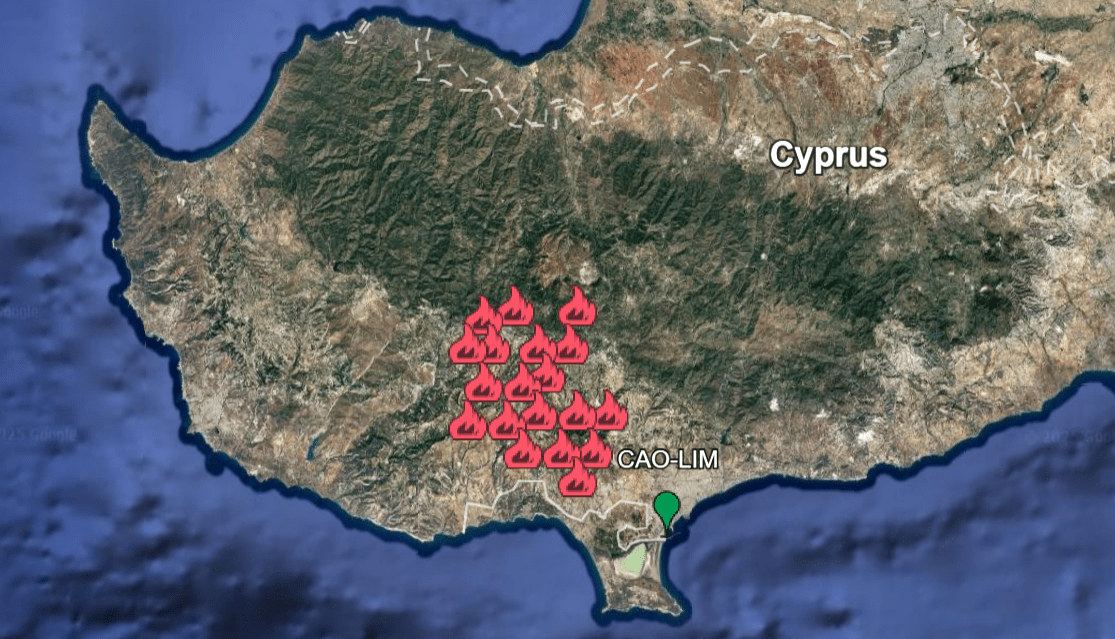
On the midnight of July 22nd, a significant fire erupted and quickly engulfed villages northwest of the Cyprus Atmospheric Observatory Limassol Port monitoring station (CAO-LIM), a facility dedicated to monitoring maritime pollution and operating as part of the Net4Cities project. Despite the blaze remaining more than 10 km away over the two days, stagnant early morning winds, followed by northwesterly winds until midday, directly carried smoke from the forest fire sites to the CAO-LIM station.
Sharp Rise in Pollutants Detected
During this period, the CAO station recorded elevated levels of:
- Particulate Matter (PM1, PM2.5 and PM10)
- Black carbon – a marker of soot and combustion
- Heavy metals – including lead, nickel, and zinc
- Potassium – a strong indicator of biomass burning
- Organic aerosols – which rose in tandem with smoke events
These pollutants are known to harm respiratory and cardiovascular health, especially in vulnerable populations such as children, the elderly, and those with pre-existing conditions.
See the Data
The plots below show pollutant levels recorded over the past seven days with elevated levels coinciding with the recent forest fires. These measurements underscore the critical role of real-time monitoring in assessing risks to nearby communities
